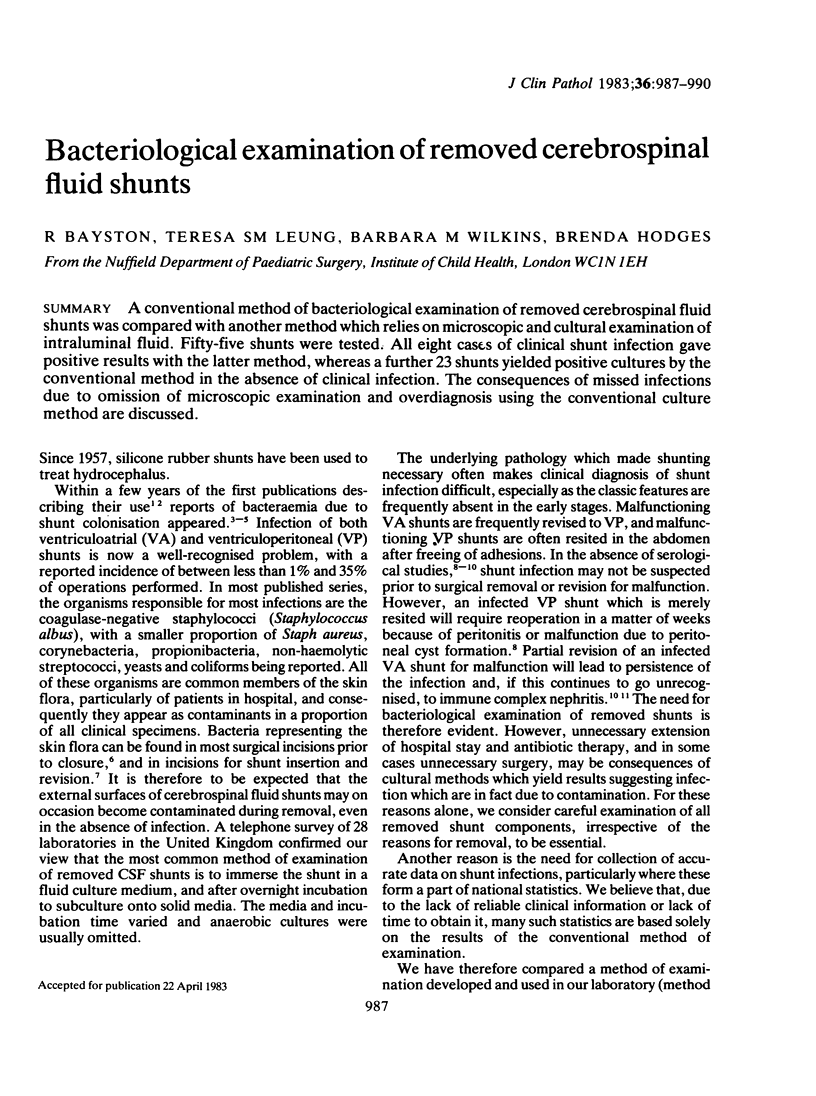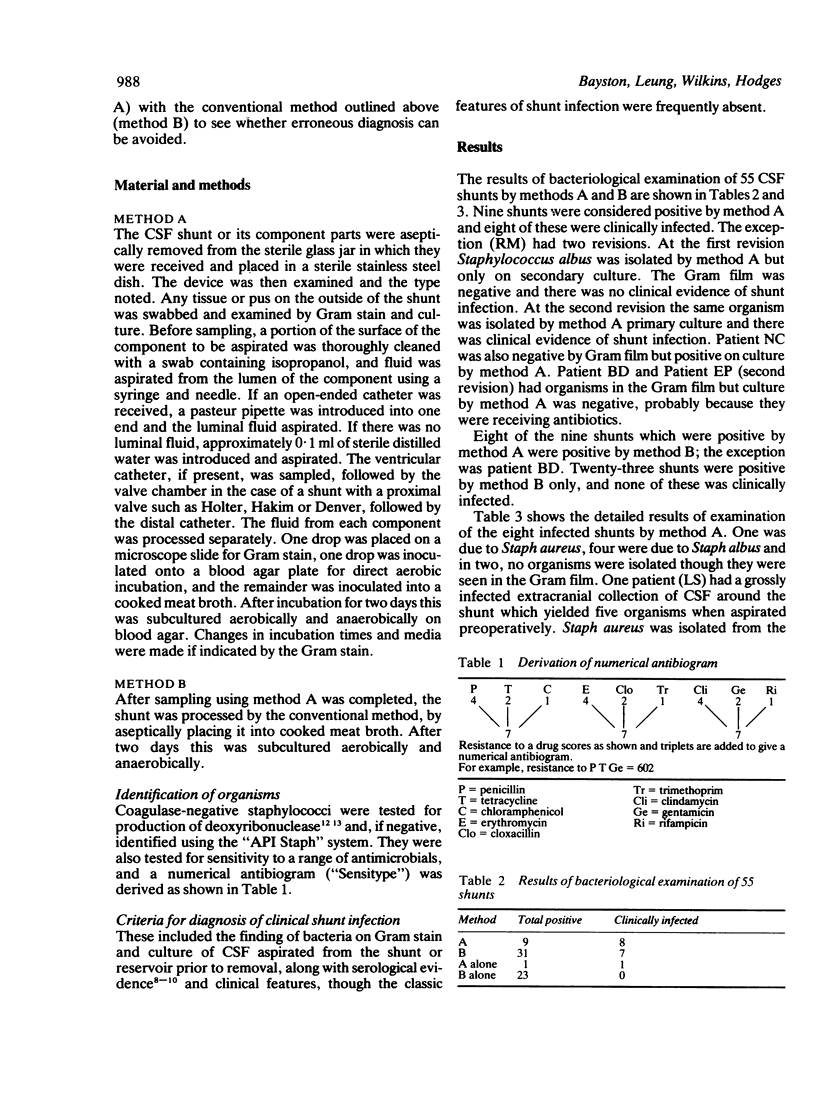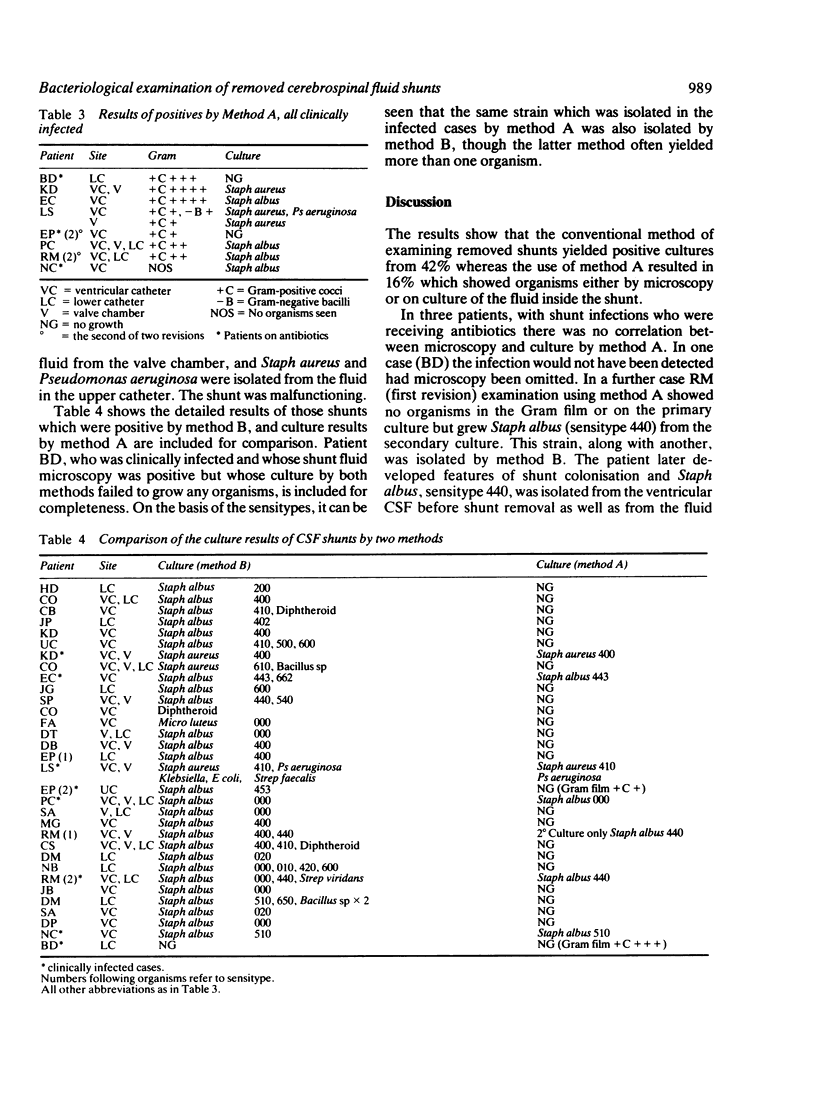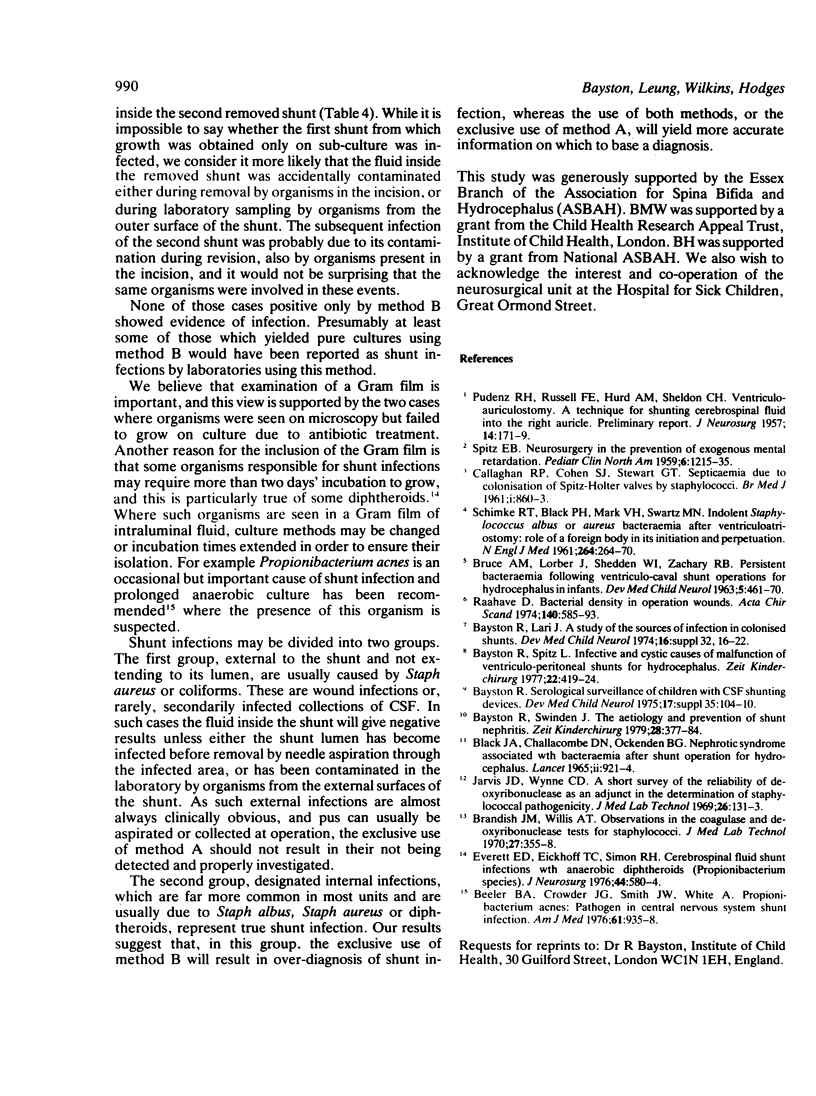Abstract
A conventional method of bacteriological examination of removed cerebrospinal fluid shunts was compared with another method which relies on microscopic and cultural examination of intraluminal fluid. Fifty-five shunts were tested. All eight cases of clinical shunt infection gave positive results with the latter method, whereas a further 23 shunts yielded positive cultures by the conventional method in the absence of clinical infection. The consequences of missed infections due to omission of microscopic examination and overdiagnosis using the conventional culture method are discussed.
Full text
PDF



Selected References
These references are in PubMed. This may not be the complete list of references from this article.
- BRUCE A. M., LORBER J., SHEDDEN W. I., ZACHARY R. B. PERSISTENT BACTERAEMIA FOLLOWING VENTRICULO-CAVAL SHUNT OPERATIONS FOR HYDROCEPHALUS IN INFANTS. Dev Med Child Neurol. 1963 Oct;25:461–470. doi: 10.1111/j.1469-8749.1963.tb10700.x. [DOI] [PubMed] [Google Scholar]
- Bayston R., Lari J. A study of the sources of infection in colonised shunts. Dev Med Child Neurol. 1974 Dec;16(6 Suppl 32):16–22. doi: 10.1111/j.1469-8749.1974.tb03443.x. [DOI] [PubMed] [Google Scholar]
- Bayston R. Serological surveillance of children with CSF shunting devices. Dev Med Child Neurol Suppl. 1975;(35):104–110. doi: 10.1111/j.1469-8749.1975.tb03588.x. [DOI] [PubMed] [Google Scholar]
- Bayston R., Swinden J. The aetiology and prevention of shunt nephritis. Z Kinderchir Grenzgeb. 1979 Dec;28(4):377–384. [PubMed] [Google Scholar]
- Beeler B. A., Crowder J. G., Smith J. W., White A. Propionibacterium acnes: pathogen in central nervous system shunt infection. Report of three cases including immune complex glomerulonephritis. Am J Med. 1976 Dec;61(6):935–938. doi: 10.1016/0002-9343(76)90418-6. [DOI] [PubMed] [Google Scholar]
- Black J. A., Challacombe D. N., Ockenden B. G. Nephrotic syndrome associated with bacteraemia after shunt operations for hydrocephalus. Lancet. 1965 Nov 6;2(7419):921–924. doi: 10.1016/s0140-6736(65)92901-6. [DOI] [PubMed] [Google Scholar]
- Brandish J. M., Willis A. T. Observations on the coagulase and deoxyribonuclease tests for staphylococci. J Med Lab Technol. 1970 Jul;27(3):355–358. [PubMed] [Google Scholar]
- CALLAGHAN R. P., COHEN S. J., STEWART G. T. Septicaemia due to colonization of Spitz-Holter valves by staphylococci. Five cases treated with methicillin. Br Med J. 1961 Mar 25;1(5229):860–863. doi: 10.1136/bmj.1.5229.860. [DOI] [PMC free article] [PubMed] [Google Scholar]
- Everett E. D., Eickhoff T. C., Simon R. H. Cerebrospinal fluid shunt infections with anaerobic diphtheroids (Propionibacterium species). J Neurosurg. 1976 May;44(5):580–584. doi: 10.3171/jns.1976.44.5.0580. [DOI] [PubMed] [Google Scholar]
- Jarvis J. D., Wynne C. D. A short survey of the reliability of deoxyribonuclease as an adjunct in the determination of staphylococcal pathogenicity. J Med Lab Technol. 1969 Apr;26(2):131–133. [PubMed] [Google Scholar]
- PUDENZ R. H., RUSSELL F. E., HURD A. H., SHELDEN C. H. Ventriculo-auriculostomy; a technique for shunting cerebrospinal fluid into the right auricle; preliminary report. J Neurosurg. 1957 Mar;14(2):171–179. doi: 10.3171/jns.1957.14.2.0171. [DOI] [PubMed] [Google Scholar]
- Raahave D. Bacterial density in operation wounds. Acta Chir Scand. 1974;140(8):585–593. [PubMed] [Google Scholar]
- SCHIMKE R. T., BLACK P. H., MARK V. H., SWARTZ M. N. Indolent Staphylococcus albus or aureus bacteremia after ventriculoatriostomy. Role of foreign body in its initiation and perpetuation. N Engl J Med. 1961 Feb 9;264:264–270. doi: 10.1056/NEJM196102092640602. [DOI] [PubMed] [Google Scholar]


